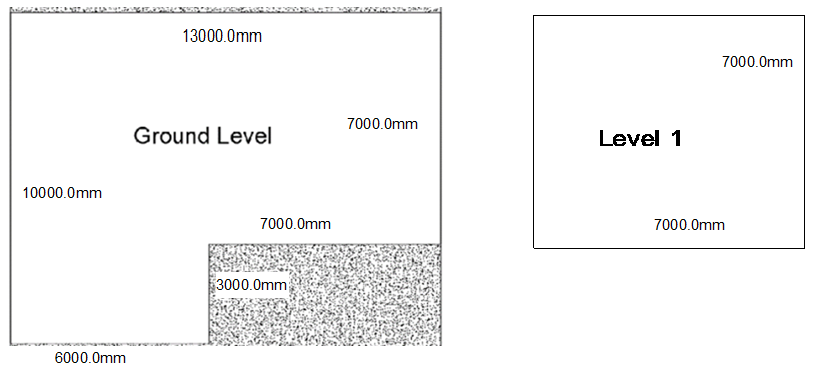| University | University of Auckland (UOA) |
| Subject | Civil Engineering 743 BIM |
Here is the Project Details Follows:
Objective:
The purpose of this project is to develop a BIM 3D model of a housing project and analyse the created model. The envelope of the project will be given as a .dwg file, a preview is shown at the end of this assignment, the layout will have to be determined by the project group and visualise different phases of the construction from start to finish. Therefore, you should define the layout for the house including a predetermined list of rooms and initially develop the architectural, structural, MEP model by following the plan you defined for the house. After making the design (architectural, structural and MEP) model, the next phase is to analyse clash detection, quantity take-off, 4D schedule development, and solar and energy analysis.
cta_quesition_1
Project Requirements:
1. Create teams of 4 people. Teams with a number of members less than 4 students will only be considered and accepted if all other students in the class have been allocated to groups. Any problem in this regard should be discussed with the course coordinator.
2. Register the teams (name and ID) on Canvas. Select a team name. Also, each team should discuss and propose one layout for this final project work.
3. Data representing the project should be relatively real (for example, architectural, structural, MEP plan) and assumptions made clearly justified.
4. The BIM models should consider the following details:
Architectural model (Revit):
- Wall, door, window, floor, roof, curtain wall, railing, staircase
- Dimensions and types should be based on the real project (not fixed but try to make it real as much as possible, don’t worry about the rationality)
Structural Model (Revit):
- Consider only footing, beam, and column as structural Discard other elements.
- Dimensions and types should be based on the real project (not fixed but try to make it real as much as possible, don’t worry about the rationality)
MEP model (Revit):
- Air-conditioning system, switch panels, lighting fixtures, plumbing and sanitary system
- Dimensions and types should be based on a real building (not fixed but try to make it real as much as possible, don’t worry about the rationality)
Solar and Energy analysis (Revit):
- Generate an energy analysis report
- Conduct solar analysis
Federated model (Navisworks):
- Bring all your previous models into Navisworks manage.
- Perform clash detection.
- Perform quantity take-off.
- Based on the quantity develop a real schedule.
- Simulate the schedule based on the time.
5. The final submission will include the Revit and Navisworks models, the analysis reports/videos, the technical report, and peer-assessment.
- 5 model files: i) an architectural model in Revit, ii) a structural model in Revit, iii) an MEP model in Revit, iv) a merged (architectural, structural, MEP) model in Navisworks which should have clash detection analysis, quantity take-off and 4D schedule, v) a merged model in Revit which should have solar analysis.
- 5 analysis reports/videos: i) an energy analysis report, ii) a solar analysis video, iii) a clash detection report, iv) a quantity take-off schedule, v) a 4D simulation video.
- 1 technical report: between 3,000 and 3,500 words.
- 1 peer-assessment
6. Each team can organise technical meetings with the lecturers and TAs to review the progress and solve different issues related to the project.
Structure of Technical Report
The technical report of the simulation project should contain at least the following elements:
- Cover page
- Abstract
- Index
- Introduction and objectives
- Work plan (methodological steps that were carried out for developing and executing BIM implementation in the project from start to finish)
- Description of the model and analysis (architectural element details, structural element details, MEP element details, energy analysis details, clash detection details, quantity take off details, project schedule)
- Discussions and conclusions
- References
- Anything else the team deems necessary to describe the project properly
cta_quesition_2
Project team Presentation:
The project team should develop an oral presentation based on the BIM project and process. Following are the guidelines to consider for the classroom presentations:
-Presentations are delivered by the team, i.e. the 4 students will present a portion of their joint project. Please follow the outline of your written report to present your project findings. You will use Powerpoint as the standard to carry out the presentation.
-Presentations should take no more than 8 min. Students will present 2 minutes each approximately.
-A 2-minute questions round will follow the presentation. In this round of questions, the lecturers, TAs and students can participate and ask questions.
-Presentations will take place on 20 October during lecture time and on 23 October during the tutorial time.
Peer-assessment:
The members of the team should assess the contribution of the peers. So they have to self-assess the participation of the team members scoring their performance between 0 and 5 marks.
Assessment Rubric:
| BIM Models: | ||||
| Unsatisfactory | Good | Very good | Excellent | |
| (0%) | (60%) | (80%) | (100%) | |
| Architectural Model | Not attempted | Partial model, missing elements | All elements included, minor issues | All elements complete and accurate |
| Structural Model | Not attempted | Partial model, missing elements | All elements included, minor issues | All elements complete and accurate |
| MEP Model | Not attempted | Partial model, missing elements | All elements included, minor issues | All elements complete and accurate |
| Energy Analysis | Not attempted | Partial input and unclear results | Complete but with unclear setup | Fully complete with well-defined setup |
| Federated Model and Simulation | Not attempted | Partial integration and analysis | Full integration but lacking clarity | Fully integrated and clearly analysed |
| Technical Report: | ||||
| Structure of Report | Not followed | Partially followed | Fully followed | Fully followed and professionally presented |
| Content of Report | Not addressed | Addressed partially | Addressed clearly | Addressed comprehensively and insightfully |
| Final Presentation: | ||||
| Content Coverage | Not covered | Partially covered | Fully covered, missing clarity | Fully covered and well explained |
| Clarity of Explanation | Not clear | Understandable with gaps | Clear but limited engagement | Clear, confident, and complete |
| Question Handling | Unable to answer | Answered some questions | Answered most questions | Answered all questions with justification |
Here is the ground level and level 1 measurements.

cta_quesition_3
BIM assignments among Civil Engineering students are usually difficult since they require the development of accurate 3D models, clash-detection, quantity take-off, and energy analysis. It might be a stress when one balances the architectural and structural elements as well as MEP elements in drafting technical reports. In case you are struggling with Revit modelling, schedules or construction simulations, you can have professional assistance to ease the process. In NZ Assignment Help, we are offering college assignment help that is 100% original, well written and specific to your project needs. Get good support and do your assignments with assurance.
- Nursing Assignment 3 : Factors that Impact Registered Nurses’ Ability to Influence National Government Health Policy
- The Management and Behaviour or Pregnant Sows on Pasture Assignment 1 | Massey University (MU)
- HAS 962 – Occupational Hygiene: Measurement Assessment 4 AIOH Technical Report | UOW
- IT00143 Install & Optimize Software Applications Assignment | Pacific Polytech
- Digital Tourism and Hospitality Assignment Report | Auckland University of Technology
- HEAL840 Critical Enquiry for Evidence Based Practice Additional Assessment Opportunity (AAO) Semester 1 2025
- RES903 Research Dissertation Assessment One | Nelson Marlborough Institute of Technology (NMIT)
- 71338 Managing Change Assessment 3 Strategy and Implementation Report | Open Polytechnic
- BSRV4601 Fundamentals Real Estate Assignment 1: Eligibility and licensing | Open Polytechnic (OP)
- MGMT801 Managing in a Multi-Cultural Environment Assignment 1 Report, Auckland Institute Of Studies (AIS) New Zealand


